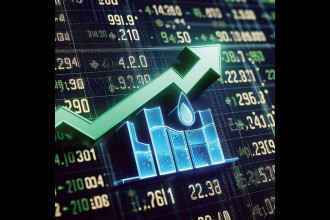
For some, ushering in 2023 will be a welcome change while for others it could be a continuation of an enthralling year that was 2022. Across the financial market’s board, most of the asset classes experienced sizeable losses. However, the commodity markets stood out as one of the rare exceptions extending the gains from 2021 and marking two years as the best-performing asset class.
Market analysts believe that commodity prices will retreat in 2023 against the backdrop of slowing global demand but a limited increase in supply will drive prices upwards and place them in bullish territories. While the commodities prices will not fuel global inflation in 2023, the upside risks to the initial price forecast are increasing and revolve around China, climate change, and continued conflict in Ukraine.
Precious Metals
After opening at $1828.61 per ounce, the value of gold inclined and attained the highest price of $2070.16 per ounce in March. However, the prices thereafter corrected and reached their lowest at $1614.61 in September. Gold had since rebounded and closed at $1823.26 per ounce for 2022. In a similar trend, silver opened at $23.32 per ounce before jumping and reaching the year-high price of $26.94 per ounce. The prices retreated towards the year’s low price of $17.54 per ounce before climbing into bullish territories by the end of the year. Platinum and palladium also followed similar patterns. In 2023, gold and other precious metals will likely influence the positive returns across the commodity market bracket. The bullion values have increased steadily since November as traders have preferred safe-haven assets to mitigate the risks of worsening market conditions and the possibility of a prolonged recession in the USA and across Europe. Globally, central banks have shown their interest in expanding their exposure to the yellow metal. Market pundits opine that since a record number of gold was bought in 2022, the trend is likely to continue into 2023 leading to the bullion capacity climbing even further.Base Metals
Copper observed a volatile year in 2022. After opening at $4.4105 for the year, the prices rallied and reached $5.0243 in March, the highest in recent memory. However, the bullish forces skittled out thereafter and bearish elements ruled till the end of the year. Market analysts believe that raw material supply constraints created during the staggered economic recovery in 2021 and then aggravated by the Russian-Ukraine conflict will continue to ease. While the demand for base metals will be cut owing to the slowing global economic growth, the fostering of construction and manufacturing in China coupled with the increased demand for production in Asia and Europe will keep the prices afloat at bullish levels.Energy
Energy products especially crude oil and natural gas observed a mixed trend during the year. Having opened at $75.69 per barrel, crude oil prices skyrocketed to $130.44 per barrel in the wake of the Russian President declaring war on Ukraine. The prices continued to stay elevated until bearish factors drove the prices towards the $80 mark in the latter half of the year. Natural gas, one of the highly traded commodities of the year, started the year trading at $3.865 per MMBTU before reaching a mind-boggling price of $10.023 per MMBTU in August. However, prices slumped thereafter and closed at $4.448 per MMBTU. Although prices have fallen sharply in the second half of 2022, they are expected to remain at higher levels in 2023. Market analysts are expecting crude oil prices to average about $85 per barrel as OPEC productions including Russia are short by about three million barrels per day from their peak production figures in late 2022. As a market analyst, it will be important to watch the developments from OPEC and the unwavering commitment to lower production quotas despite the pressure from other economies. For natural gas, market pundits expect a significant easing of European and US prices. Gas supplies from Russia to the EU will continue to be cut off. This will only garner more global demand and will increase natural gas prices in 2023.Agro-Commodities
When the Covid 19 pandemic hit the global economy, there was bound to be disruption in the global supply chain. However, the risks stemming from this disruption are expected to subside further in 2023. Increased production of agricultural commodities will cause a drop of 8.6% in food indexes. However, the prices will be driven by various events in the Black Sea region, including an extended agreement allowing Ukraine to export wheat. The conflict will also have an indirect impact on other agricultural commodities owing to inflated fertilizer prices resulting in acute shortages.Conclusion
“Don’t Fight the Fed” was a primary mantra in 2022 and will continue to be the same throughout 2023. The fallout from the rate increase is likely to accelerate in 2023 and propel a dump in the following cycle in commodities. As we enter 2023, the outlook has been driven by several opposing forces. Will the price hike continue as Russia continues to curtail supply to key commodity consumers or will the global economic slowdown have the final say and influence consumer sentiments? More importantly, could the ongoing reopening of China prove to be a pivotal factor in keeping commodities prices elevated? Questions have no clear answers at the moment but by the end of 2023, we will see who will win this tug-of-war! READ ALSO:
Published Date: February 3, 2023, 12:00 am
Post Comment
RELATED Commodity Perspective




